2017 May WATR… IG Images, Tutorials and Backstories
 Hi and welcome to the May 2017 edition of my Instructional BLOG – Workshop at the Ranch. Many of my Instagram images teach photography and Lighting. Here are a few “Liked” IG posts with additional Tutorials and Backstories. Thanks for FOLLOWING me: @daveblackphoto
Hi and welcome to the May 2017 edition of my Instructional BLOG – Workshop at the Ranch. Many of my Instagram images teach photography and Lighting. Here are a few “Liked” IG posts with additional Tutorials and Backstories. Thanks for FOLLOWING me: @daveblackphoto ![]()
 Image 1 … IG #709 “Dugout Light” … Nikon D5, ISO250, 20 seconds at f9, Nikon 16-35mm (at 35mm) … Lightpainting.
Image 1 … IG #709 “Dugout Light” … Nikon D5, ISO250, 20 seconds at f9, Nikon 16-35mm (at 35mm) … Lightpainting.
Using a small ProTac 2AA LED flashlight made by Streamlight to illuminate a subject during a long exposure time of 20 seconds allows me to “paint the light” exactly where I want it.
For this Lightpainting portrait of a baseball player I wanted 3 beams of light to guide the viewer to the athletes face, the baseball, and the broken bat.
Rather than use a fog machine and strobes to create the 3 beams of light I simply “Lightpainted” them on the dugout wall and bench using an LED flashlight … about 3-5 seconds per beam.
NOTE: Summit SPORTS Workshop July 12-17 Denver. @summitworkshops http://www.photographyatthesummit.com/sports/
Join me for location lighting and Lightpainting athletes, and an Awesome line-up of instructors: John McDonough SI, Brad Smith SI and NY Times picture editor, Joey Terrill GOLF Digest Location Lighting, Deanne Fitzmaurice Pulitzer Prize winner, Lucas Gilman Red Bull, Mark Terrill AP, Jeff Jacobson U of Kansas, Andrew Hancock SI, , Nate Gordon SI picture editor and workshop founder Rich Clarkson.![]()
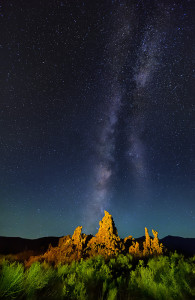 Image 2 … IG #698 “Tufa Galaxy” … Nikon D750, ISO6400, 20 seconds at f5, Nikon 16-35mm lens (at 16mm), WB 4000K … Lightpainting.
Image 2 … IG #698 “Tufa Galaxy” … Nikon D750, ISO6400, 20 seconds at f5, Nikon 16-35mm lens (at 16mm), WB 4000K … Lightpainting.
This Lightpainting was made on location at Mono Lake California during the filming of my video class for KelbyOne: www.kelbyone.com “Lightpainting Under the Milky Way” This video class teaches the A-Z process that I use to Lightpaint large landscapes at night with star fields above.
The Tufa formations are mostly white, but I decided to give this formation a warm color tone by using my 2 million candle power incandescent spotlight, which is a very warm light. The foreground vegetation was parched, so I used a Green gel over the front of the spotlight to give it some life. ![]()
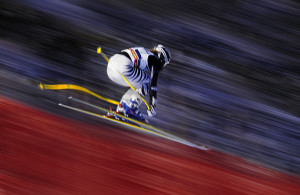 Image 3 … IG #634 Downhill Motion World Alpine Championships 1999:
Image 3 … IG #634 Downhill Motion World Alpine Championships 1999:
The Birds of Prey Downhill course at the 1999 World Alpine Championships in Vail/Beaver Creek, Colorado provided one of the fastest courses on the planet, but it also had a narrow “shoot” where competitors would get airborne.
This narrow tree lined area provided a very close background to the skier, of which a “Pan-Action” technique provided some “unique” imagery.
The Downhill skier is traveling 80 mph, but by using a slow shutter speed of only 1/60 and “panning” laterally with the athlete they appear to be speeding downhill at well over 120 mph. It is the close background in relation to the athlete that really INCREASES the “feeling” of SPEED.
Many photographers choose a location to do slow shutter speed pan-action that is too far from the background, or has no background at all. Place your athlete against a background that is close … a subject placement and close background shot with a slow shutter speed of 1/125, 1/60, 1/30 or even slower is what gives a pan-action image the feeling of excessive speed.![]()
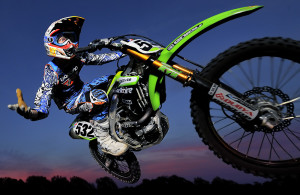 Image 4 … IG 690 Moto Handout Speedlights: “Moto Handout” … Nikon D3s, ISO800, 1/1250 at f5, Nikon 14-24mm lens (at 14mm) 4 Nikon Speedlights (each at 1/4 power … High Speed Sync).
Image 4 … IG 690 Moto Handout Speedlights: “Moto Handout” … Nikon D3s, ISO800, 1/1250 at f5, Nikon 14-24mm lens (at 14mm) 4 Nikon Speedlights (each at 1/4 power … High Speed Sync).
High Speed Sync with Speedlights makes shooting with FLASH at fast shutter speeds above a typical 1/250 possible … 1/1000, 1/2000/ and even 1/4000 is makes it easy to STOP the Action.
For Nikon High Speed Sync go to the: Custom Settings Menu …
e: Bracketing and Flash … Flash Sync Speed … now activate 1/250s (Auto FP)
Your Nikon camera will now automatically allow High Speed Sync any time you use your Nikon Speedlight with a shutter speed that is faster than 1/250.
Having a talented athlete and communicating with them is a key component when making a unique action image. This guy was so accurately close to me that I could high-five him as he flew by. I will add that I usually “inch” my way closer and closer each time he jumped and I continually asked him if he was comfortable.![]()
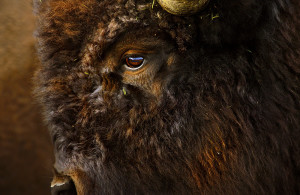 Image 5 … IG #681 World Wildlife Day “American Legend” … Nikon D800, ISO1600, 1/500 at f6.3, Nikon 200-400mm f4 zoom lens (at 400mm) with Nikon TC14E III 1.4x teleconverter (550mm total)
Image 5 … IG #681 World Wildlife Day “American Legend” … Nikon D800, ISO1600, 1/500 at f6.3, Nikon 200-400mm f4 zoom lens (at 400mm) with Nikon TC14E III 1.4x teleconverter (550mm total)
My occupation as a photographer usually involves SPORTS action and Creative Lighting projects, but I love making images of GOD’s creation.
World Wild Life Day is certainly a single date on the calendar, but it is truly a daily celebration throughout the year.
I am not a wildlife photographer, …and don’t even pretend to be one.
It was about 1/2 mile from the Triangle X Ranch near Teton National Park where several vehicles had stopped to gaze at the massive herd of Bison. I too pulled off the road and casually began taking some pictures.
Suddenly, the entire herd turned and began to trot, then gallop and then run directly at all of us. No one moved as they were advancing so quickly. They surrounded us while on the run. I stood motionless while being wedged into my open truck door.
I hand-held my Nikon D800, Nikon 200-400mm G VR II zoom lens with a TC-14E 1.4x Teleconverter (a 550mm focal length) and made several images. I just kept on shooting until the entire herd had rumbled by. The sun is coming from behind the Bison and also reflecting off the windshields of surrounding vehicles, all of which created some beautiful shafts of light on the passing Bison. With the Bison so close and 550mm of lens all I could see was a portion of the animals faces.
When the herd had passed, and my heart had begun to slow down, I noticed a photographer, a professional or at very least one who photographs wildlife on a regular basis, he was pressed against the rear panel section of my truck. I said to him, “That was a thrill for me, guess you see this sort of thing all the time.” He turned to me all “wide-eyed and breathless” and said “After 40 years in this business I have never been in a situation like that…it was as BIG a thrill as I have ever had … hope I got something special.”
Not sure how his pictures looked, but my “American Legend” is a career favorite for me.![]()
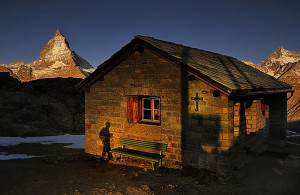 Image 6 … IG 664 “Alpine Shadow” at Rotenboden Station … Nikon D3s, ISO1000, 1/500 at f14, Nikon 24-70mm lens.
Image 6 … IG 664 “Alpine Shadow” at Rotenboden Station … Nikon D3s, ISO1000, 1/500 at f14, Nikon 24-70mm lens.
Rotenboden Station is a familiar location for those who are climbing, hiking or photographing the alpine sunrise at the Matterhorn in Switzerland. I was done with my morning shoot at the Matterhorn and was simply waiting for the Alpine train, but I am always “looking” for a picture wherever I am.
The rising sunlight and shadows were stunning on the station wall but the scene was incomplete … it needed a human element. Then as if on cue, a hiker walked up to the train platform and his shadow was cast onto the station wall. “CLICK” … a good morning of photography just got even better! ![]()
 Image 7 … IG #692 Sunlight Flight Sandhill Hill Cranes NEB 2017: “Sunlight Flight” … Nikon D500, ISO100, 1/8000 at f18, Nikon 200-500mm lens (at 500mm) WB 10,000K, … in camera Picture Control settings: VIVID.
Image 7 … IG #692 Sunlight Flight Sandhill Hill Cranes NEB 2017: “Sunlight Flight” … Nikon D500, ISO100, 1/8000 at f18, Nikon 200-500mm lens (at 500mm) WB 10,000K, … in camera Picture Control settings: VIVID.
This was my first experience teaching/photographing the Sandhill Cranes migration and Summit Sandhill Cranes workshop @summitworkshops.
http://www.photographyatthesummit.com
With an official daily count of 35,000 plus Cranes within our view, the workshop attendees dressed out in camouflage, set up their “BIG Glass” and photographed this spectacular event of nature.
I used a WB of 10,000K to really warm up the sun 90 minutes before sunset and also use a Picture Control setting of VIVID help define the sun.
My favorite camera-lens combination was the Nikon D500 and Nikon 200-500mm f5.6 lens. This “handheld” combo is lightweight and easy to pan with the Cranes in flight. The quality of the Nikon 200-500mm f5.6 lens is fantastic … sharp edge to edge and beautiful with a Nikon TC 14E III 1.4x Teleconverter. That’s 700mm on the D500 crop sensor … and the image quality looks amazing! ![]()
My thanks to friends-faculty: @summitworkshops, @mforsbergphoto, @melissagroo, @bobsmithimages, and all the students who made my first time teaching at this workshop a true joy and memorable experience.
I hope you have enjoyed this WATR … Come FOLLOW me on Instagram @daveblackphoto …. “There’s always more to learn” …Adios. Dave


